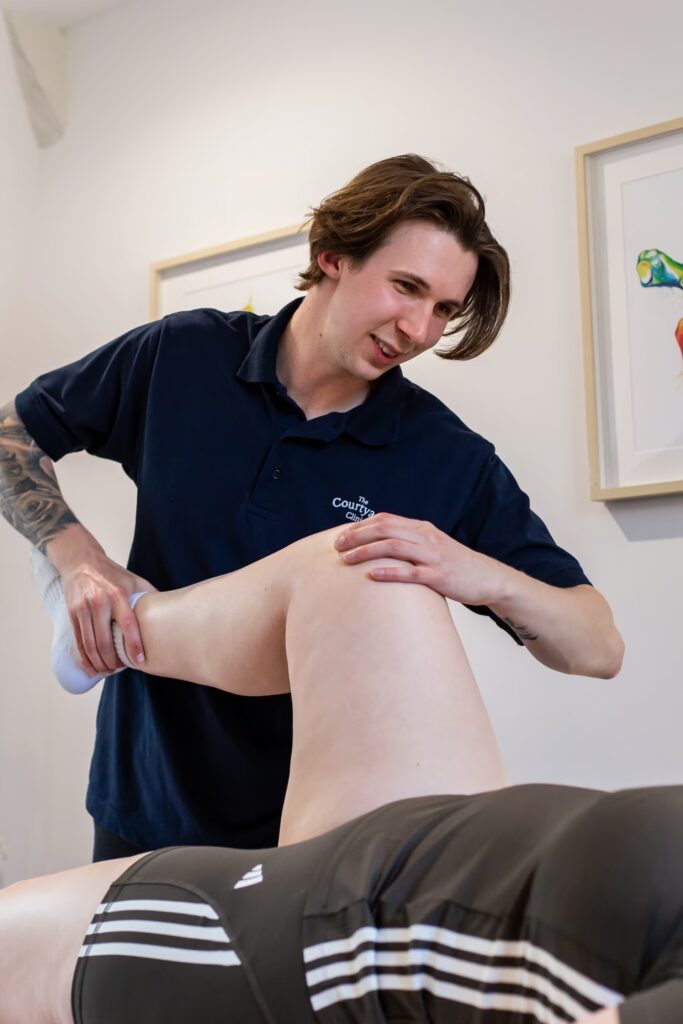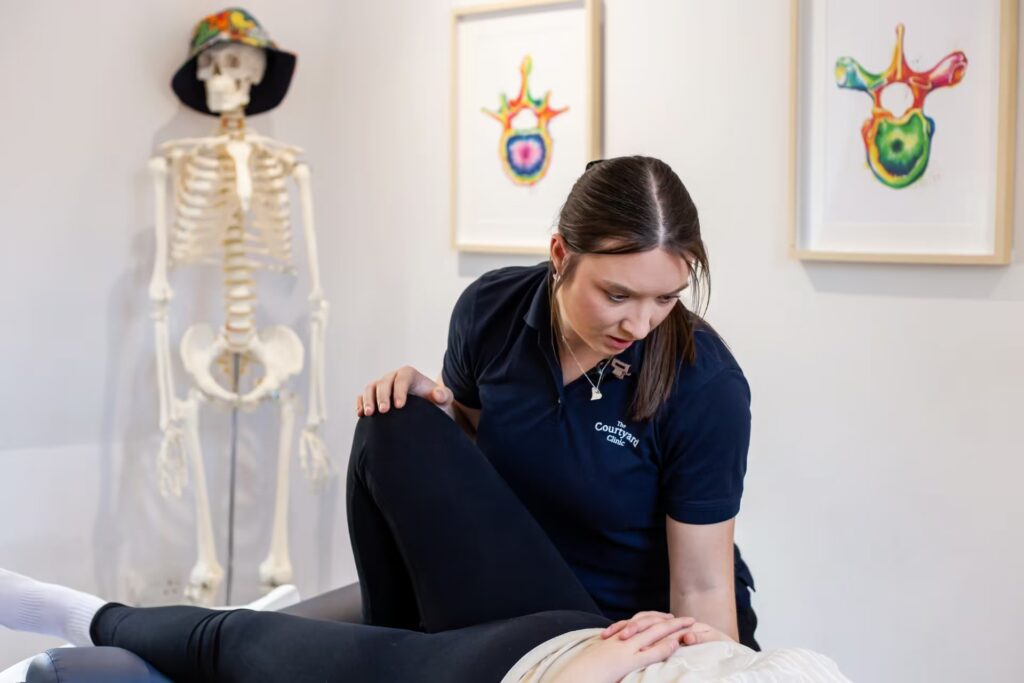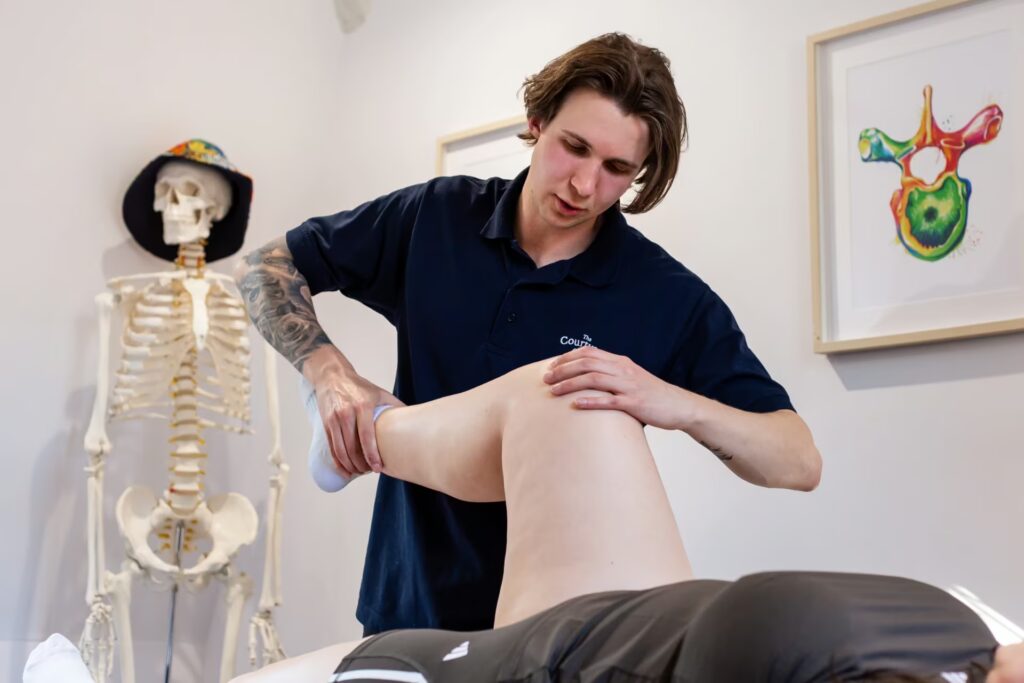About Knee Pain
The knee is what is known as a ‘modified hinge joint’ which means that it bends like a hinge, but has an extra movement of rotation that occurs through the knee when we rotate our feet in or out. Bearing in mind the amount of force that travels through the knee, a hinge joint is not what most engineers would choose to install there. There are several tricks that the body has in the bag to maintain stability, and it is usually a compromise to the structures involved in this that lead to pain and dysfunction in the knee.
One of these structures is known as the meniscus. When people refer to cartilage in the knee, this is generally what is being described. The meniscus is a figure-of-8 shaped cartilage that lies on top of the shin bone and makes a pair of cups for the end of the thigh bone to sit in to make a good and stable fit. Meniscal injuries can occur with forced twisting of the knee and may be obvious straight away. Or they may be minor initially but then worsen with subsequent use. Often discomfort with meniscal injuries is accompanied by audible clicking, locking and sometimes even giving way of the knee.


Common Causes of Knee Pain
The ligaments are a major factor in the stability of the knee and are commonly damaged in sporting injuries. This can create instability which can lead to difficulties later in life. Ligaments anchor one piece of bone to another and the position of its attachments determine what movement they stabilise. In the knee we have the Collateral Ligaments on the inside and outside of the knee which prevent the knee bending laterally from side to side. These can be damaged by a sideways impact. Inside the knee we have the cruciate ligaments and these prevent the thigh bone sliding forwards or backwards on the shin bone. These are commonly damaged by forced rotation through the knee when the foot is planted/fixed in place. Ligament injury severity can range from a minor strain (which will cause some discomfort but will heal well and quickly) to a complete tear or rupture which may require surgery and long-term intensive rehabilitation.
Other structures that aid knee function are the bursae. A bursa is a fatty fluid-filled structure located between the skin and tendon or tendon and bone. The main function of a bursa is to reduce friction between neighbouring structures when they move. There are several bursae around the knee joint and these have the potential to become inflamed with altered knee function. Repetitive strain, muscular tightness and dysfunctional joint movement can all contribute towards swelling of a bursa. Symptoms of Bursitis include heat, pain and swelling. This condition may be easily resolved, or very stubborn, depending on the surrounding mechanics and why it has occurred in the first place.
The most common condition affecting the knee is wear and tear (osteoarthritis)
Wear and tear is not the inevitable effect of age, instead osteoarthritis is usually secondary to a history of knee problems that have led to the excessive damage and wear.
When the structures that stabilise and aid the function of the knee are compromised, damaging forces start to affect the surfaces that line the joint. Once the lining of the joint becomes damaged and cannot repair, damage can extend to the bony surfaces. Initially osteoarthritis may be experienced as a dull achy pain and stiffness that can be relieved with gentle use. As wear and tear develops it may be accompanied by swelling, sharp/acute pain and very limited movement. The body starts to attempt to regenerate bone but these attempts lead to hypertrophy (overgrowth) and can cause spurs which become inflamed and pinch on surrounding tissues.
Our patients have often had osteoarthritis explained to them like a death sentence for the joint, something that is inevitably going to get progressively worse until they need a replacement. This is simply not the case. If there is severe arthritis or irreparable instability in the knee then a replacement may be the best option. However, mild to moderate wear and tear can often be treated with physical therapy to improve flexibility, and exercises to restore and maintain joint stability. When this is the case, wear and tear may not get progressively worse with age, and the wear that is there may present as nothing more than morning stiffness and occasional aches with unusual exertion.
